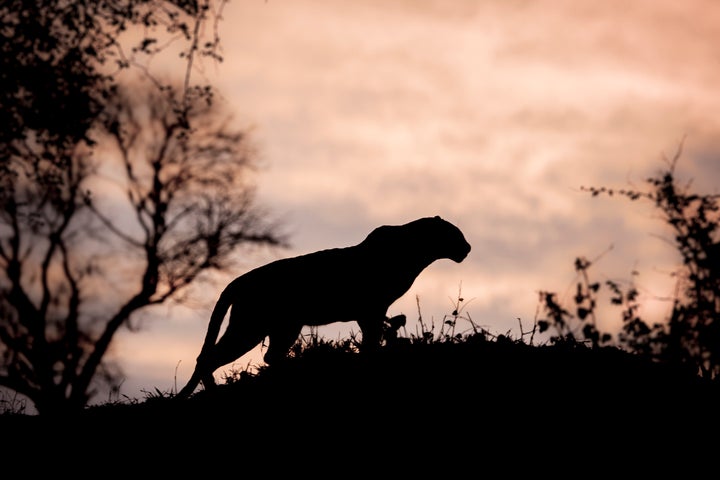Villagers in Bedfordshire have been warned to be on their guard amid “credible” reports of a big cat sighting.
Silsoe Parish Council posted the warning on its Facebook page, describing the “cat-like animal” as “black and larger than a Labrador”.
It was “moving from one of the barley fields behind West End Lane towards Thrift Woods, in the Wardhedges direction,” the council added.

Witness Rob Terry told the Telegraph he happened upon the beast while he walked his cocker spaniel.
“I just couldn’t believe it,” he recalled, describing the animal as being jet black and with a “terrific, 3ft-long tail”.
“It stepped out from the barley and shot across the track. I think it had been eating rabbits as there were dozens dashing about.”
Voicing fears for the safety of children playing in the area, Terry revealed the RSPCA had asked him not to try and feed it, but added: “I would only want to feed it a piece of lead.”
The council echoed similar advice from the animal charity in its post, stating: “We have been in touch with the RSPCA who advised us to check missing animals – nothing similar there – and the police, who advised that there was not much more than we can do at this stage unless it is spotted again, apart from be aware and be careful.”
While some comments mocked the posting, some seemed to take the warning seriously, with one remarking: “It’s that panther again”.
Another claimed: “It’s been around for years in the fields by Barton and Gravenhurst.”

“I have seen a wild large cat in the fields around the old watermill in Barton, and then seen it’s footprints later the same year in the snow,” wrote Faye Harwood Rogerson.
She continued: “Absolutely huge paw prints, about 10cm top to bottom. It was first thing in the morning in fresh snow, with no ‘human’ prints to accompany it, so couldn’t have been a dog.”
Rumours of big cats prowling the length and breadth of the British countryside have persisted for many years.
Accepted wisdom seems to point to at least some of the sightings being genuine, the result of wild animals being released during the late 1970s and early 1980s.
Mee said pumas roamed the region for more than 30 years until 2010, when he believes the entire pack was wiped out by the boldest winter on record.
The animals were said to have been released by Mary Chipperfield of the Chipperfield circus family.
The story of the Dartmoor pumas may well explain the discovery of some of the mutilated carcasses of animals in the area, but it doesn’t quite account for the fact there have been thousands of reported sightings of large felines on moorland and in woods and fields across the whole of the UK.
The animals - normally black or brown - have been seen in almost every county in Britain, from Cornwall to the tip of Scotland.
Sightings of mystery beasts have largely been blamed on the introduction of the 1976 Wild Animals Act, which curbed a growing fashion for exotic and potentially dangerous pets.
Some owners were thought to have freed their animals into the wild to avoid falling foul of the law.
Nonetheless close encounters with big cats are extremely rare. Expert Rick Minter said: “Their hearing and movement are exceptional, which helps them avoid close contact with people.
“In the event of a close-up encounter, you should stay calm and face towards the animal as you back off, but not threaten or aggravate it.
“The chances are it will have backed off very quickly first.”
The only native wild cat species in the UK is the Scottish wildcat, which looks similar to a domesticated tabby, but there have been calls to reintroduce the Eurasian lynx, thought to have disappeared from Britain around 1,000 years ago.
